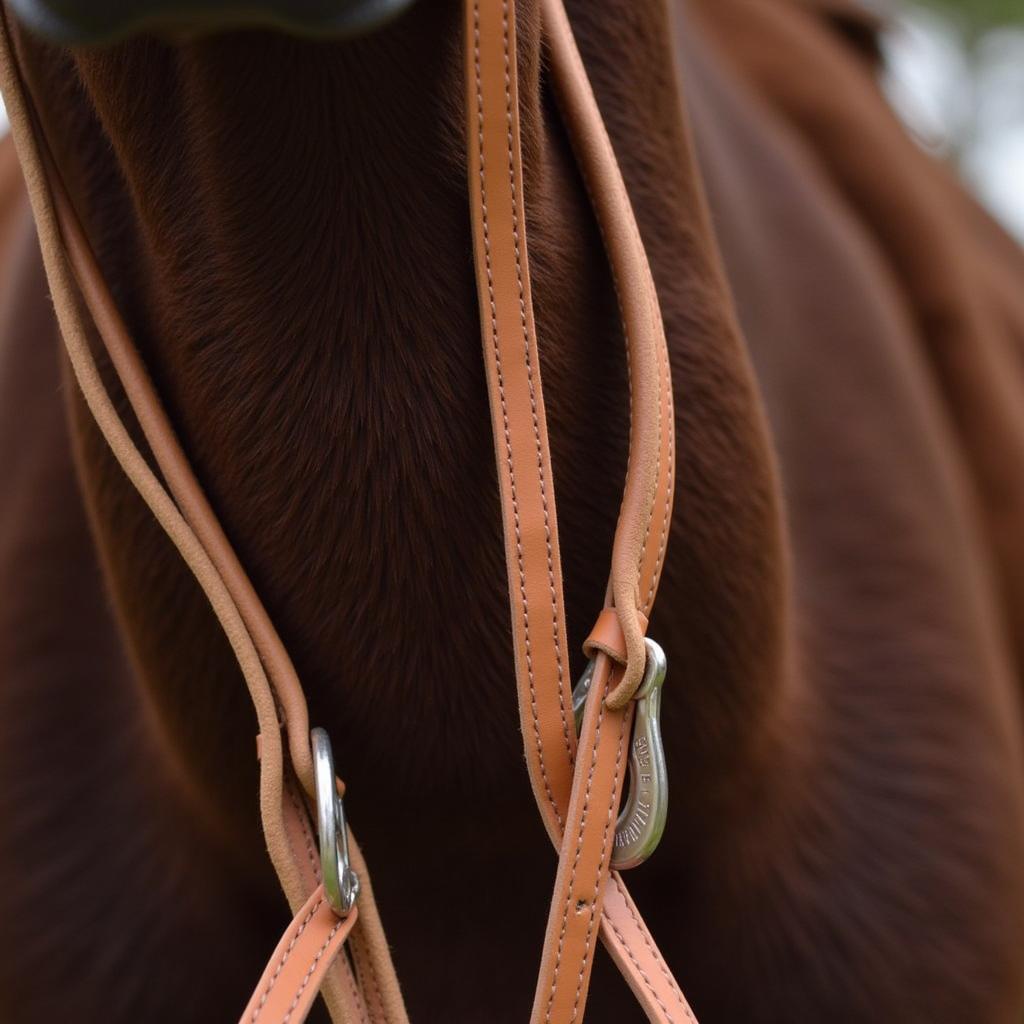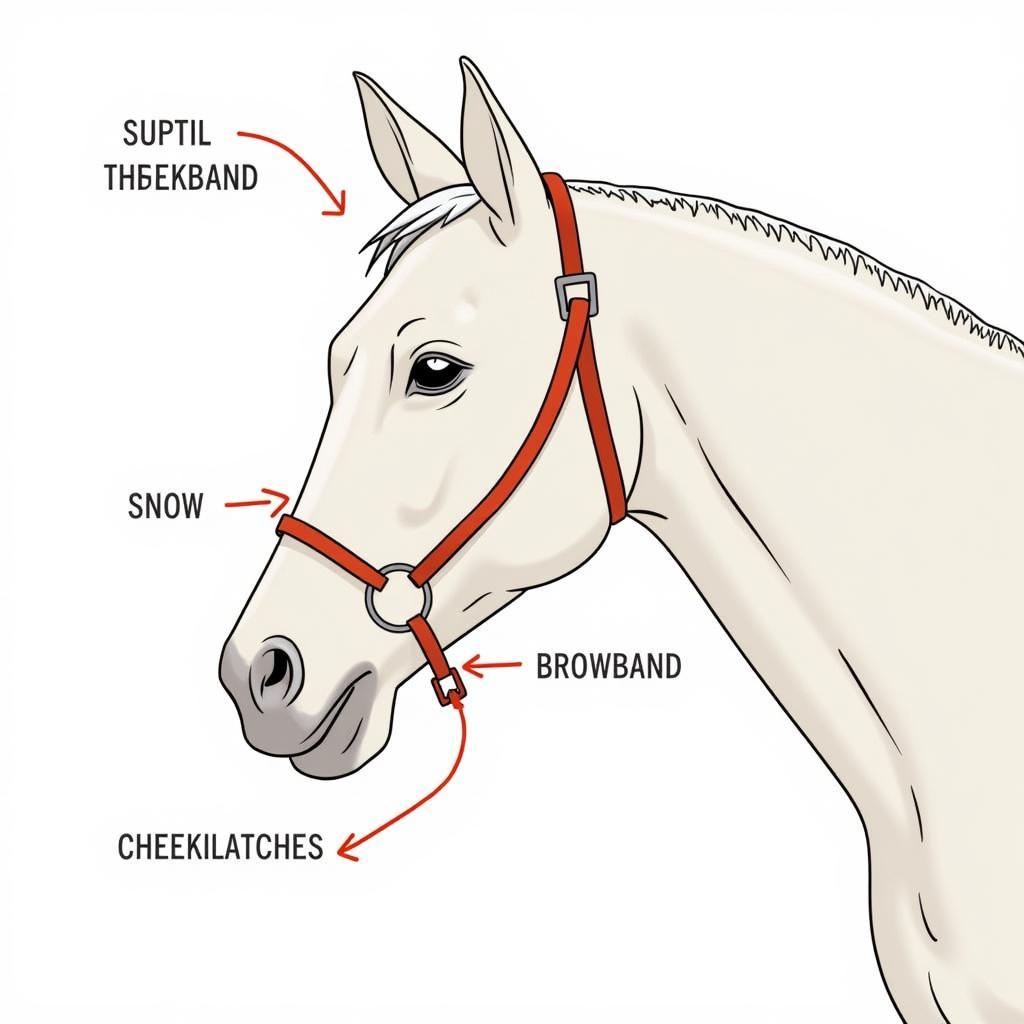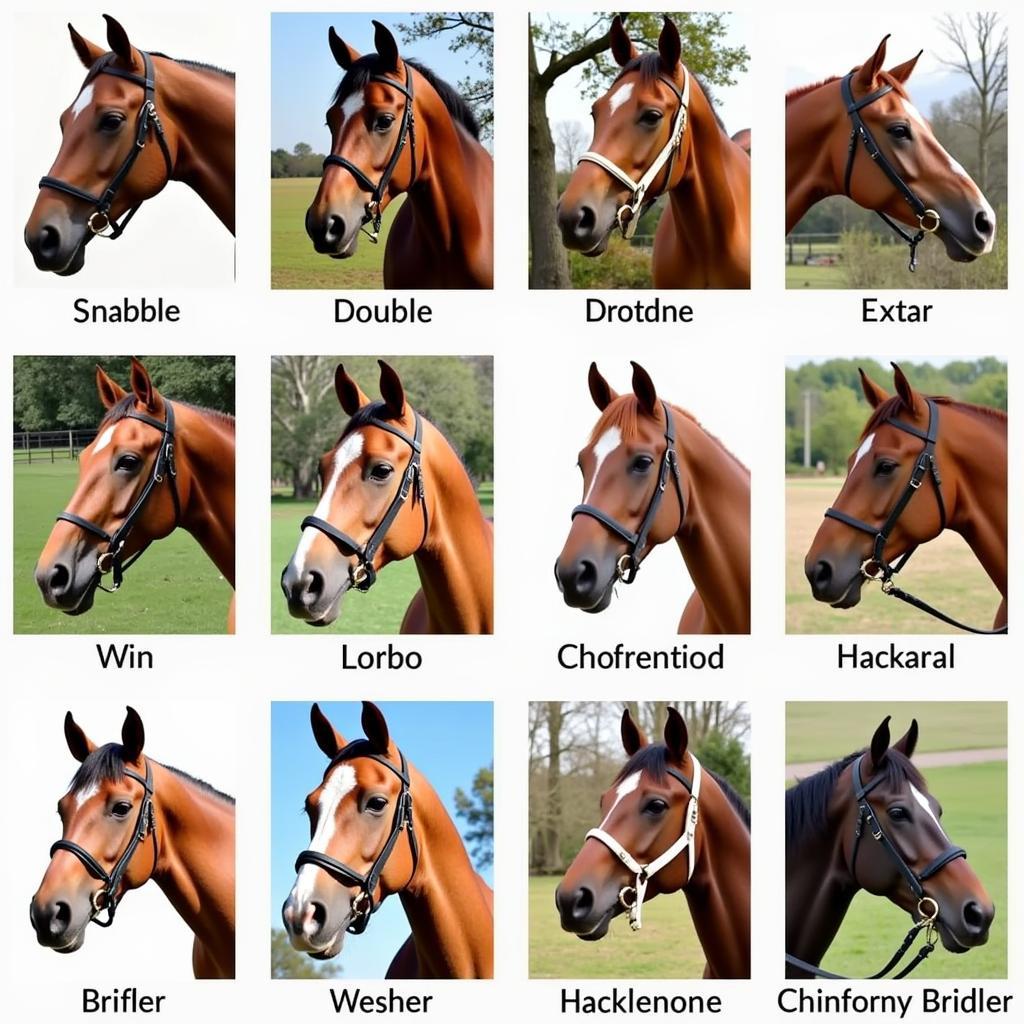Understanding horse bridles and reins is fundamental to safe and effective riding. A bridle, combined with reins, forms the essential connection between rider and horse, allowing for communication and control. Choosing the right bridle and reins, and understanding their proper use, is crucial for both horse and rider comfort and performance.
For new horse owners, understanding the intricacies of horse bridles and reins can feel overwhelming. This guide will break down everything you need to know about these essential pieces of tack, from the different types available to proper fitting and maintenance. We’ll cover various bridle styles, rein materials, and how to choose the best combination for your riding discipline and your horse’s individual needs.
Types of Horse Bridles
There are various types of horse bridles, each designed with specific purposes and benefits. Some common types include:
- Snaffle Bridle: A common type used for general riding and training, characterized by a single bit and rein. It offers clear and direct communication.
- Double Bridle: A more advanced bridle utilizing two bits—a bradoon and a curb—and two sets of reins, offering greater control and precision.
- Western Bridle: Typically seen in Western riding disciplines, these often feature a single rein and a curb bit, prioritizing neck reining and a lighter touch.
- Hackamore: A bitless bridle that exerts pressure on the nose and poll, offering an alternative for horses sensitive to bits.
Rein Materials and Considerations
Just as important as the bridle itself are the reins. The material and construction of your reins will directly impact your feel and communication with your horse.
- Leather Reins: A classic choice, offering excellent grip and durability. Requires regular cleaning and conditioning.
- Rubber Reins: Provide a non-slip grip, especially beneficial in wet conditions.
- Synthetic Reins: A durable, low-maintenance option, often more affordable than leather.
- Roped Reins: Common in Western riding, offering a lighter feel and greater flexibility.
 Close up of Leather Horse Reins
Close up of Leather Horse Reins
After you’ve selected your purple horse tack, it’s vital to fit it correctly.
Fitting Your Horse Bridle and Reins
Properly fitting a bridle is essential for your horse’s comfort and performance. An ill-fitting bridle can cause pinching, rubbing, and discomfort, leading to behavioral problems and potentially even injury.
- Bit Fit: The bit should rest comfortably in the horse’s mouth without pinching the corners or causing excessive wrinkles.
- Browband: The browband should sit comfortably across the forehead without being too tight or too loose.
- Throatlatch: Allow two to three fingers’ width between the throatlatch and the horse’s throat.
- Cheekpieces: Adjust the cheekpieces so the bit creates one or two wrinkles at the corners of the horse’s mouth (for a snaffle bridle).
 Horse Bridle Fitting Guide
Horse Bridle Fitting Guide
Caring for Your Horse Bridle and Reins
Regular cleaning and maintenance will extend the life of your bridle and reins and ensure they remain in good working order.
- Leather Care: Clean leather regularly with saddle soap and condition with leather balm.
- Synthetic Material Care: Wash synthetic materials with mild soap and water.
- Metal Care: Regularly clean and polish metal buckles and hardware.
Dr. Emily Carter, renowned equine veterinarian, advises, “Regular bridle inspections are essential for identifying wear and tear. Replacing worn parts promptly prevents potential hazards and ensures your horse’s safety.”
Choosing the Right Bridle and Reins for Your Discipline
The appropriate bridle and reins will depend on your riding discipline and your horse’s individual needs. Consulting with a qualified trainer or experienced equestrian can be beneficial in making the right choice.
- English Disciplines: Snaffle bridles are commonly used for disciplines like hunter/jumper and dressage, while double bridles are often seen in upper-level dressage.
- Western Disciplines: Western bridles with roped reins are typical.
 Different Types of Horse Bridles
Different Types of Horse Bridles
Conclusion
Selecting and fitting horse bridles and reins correctly is paramount for both horse and rider well-being and performance. Understanding the different types available, along with proper fitting and maintenance techniques, will contribute to a safe and enjoyable riding experience. Remember to prioritize your horse’s comfort and consult with experienced professionals when needed.
FAQ
- How often should I clean my horse’s bridle?
- What are the signs of a poorly fitting bridle?
- How do I choose the right bit for my horse?
- What is the difference between a snaffle and a double bridle?
- Can I use a hackamore on any horse?
- How do I know when my reins need replacing?
- What are the benefits of using different rein materials?
See more about horses with tack and horse hunting gear. Also learn more about chifney bit for horses
For further information or assistance with your horse bridle and rein needs, please don’t hesitate to contact us. Call us at 0772127271, email us at [email protected], or visit us at QGM2+WX2, Vị Trung, Vị Thuỷ, Hậu Giang, Việt Nam. Our dedicated customer service team is available 24/7 to assist you.